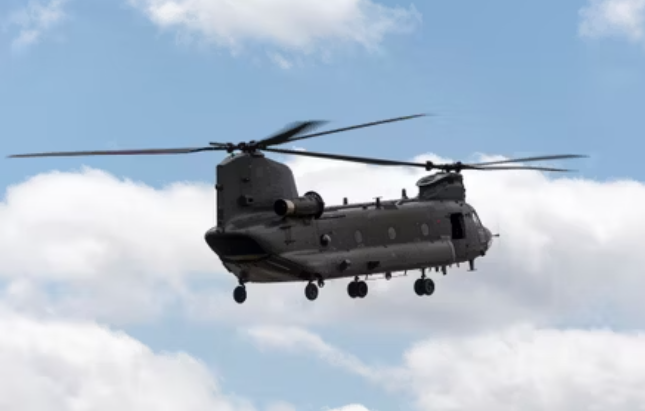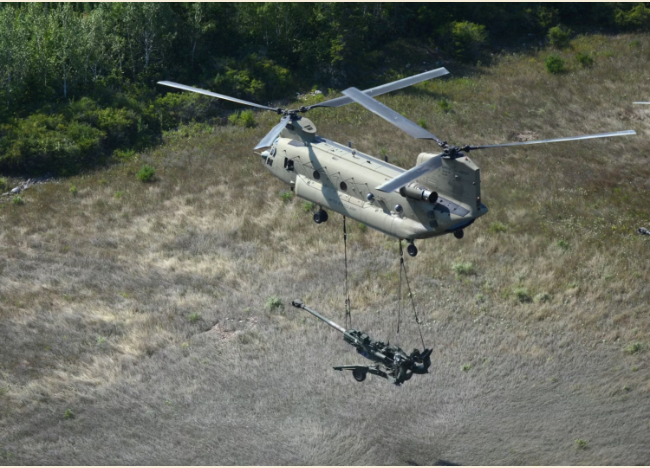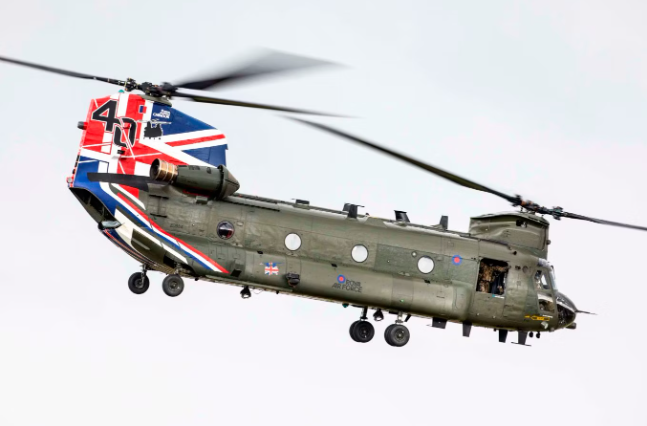5 𝙁𝙖𝙨𝙩 𝙁𝙖𝙘𝙩𝙨 𝘼𝙗𝙤𝙪𝙩 𝙏𝙝𝙚 𝘽𝙤𝙚𝙞𝙣𝙜 𝘾𝙃-47 𝘾𝙝𝙞𝙣𝙤𝙤𝙠 𝙈𝙞𝙡𝙞𝙩𝙖𝙧𝙮 𝙃𝙚𝙡𝙞𝙘𝙤𝙥𝙩𝙚𝙧
The Boeing CH-47 Chinook has been actively serving with various countries’ militaries for over 60 years.
 Photo: Simple Flying
Photo: Simple Flying
Summary
The CH-47 Chinook flew for the first time in 1961.
Boeing is upgrading the CH-47 Chinook to a more advanced Block II aircraft with increased performance and capabilities.
Over 20 countries operate the Chinook across the globe, including China, Iran, and Libya.
Boeing described the CH-47 as a heavy-lift helicopter chosen by the United States military, as well as other countries, with over 20 operators across the world. The multi-mission and tandem rotor helicopter has proven itself in cargo and troop transport, search and rescue, evacuation, special operations, and much more.
The helicopter had its first flight in September 1961, being introduced into service a year later. While initially, the aircraft was being developed by Vertol, following the company’s acquisition by Boeing in 1960, it was then marketed as the latter manufacturer’s aircraft.
1 Specifications of the Boeing CH-47 Chinook Block II
First Block II Chinook delivery: 2020
Basic specifications:
Length with operating rotors: 98 feet, 10.7 inches (30.14 meters)
Height: 51 feet 2 inches (5.68 meters)
Fuselage width: 12 feet 5 inches (3.78 meters)
Boeing announced that it would be upgrading the CH-47 Chinook to the Block II aircraft in July 2017. At the time, the manufacturer said that a recent $276 million contract would fund the initial three Block II Chinooks, validating the technological advancements that will increase the helicopter’s lifting capabilities.

Phtoo: ThaKlein | Shutterstock
The manufacturer also detailed that an improved drivetrain will transfer more power from the engines to the all-new, swept-tip rotor blades. The new blades have been designed to lift 1,500 additional pounds (680 kilograms), while the fuel tank configuration will be changed to two from six, allowing the aircraft to carry more fuel.
As such, Boeing detailed that the CH-47 Chinook Block II aircraft is 98 feet and 10.7 inches (30.14 meters) long with operating rotors, 51 ft 2 in (5.68 m) high, and 12 ft 5 in (3.78 m) wide. The fuel capacity is 1,080 gallons (4,088 liters), with two Honeywell T55-GA-714A engines powering the aircraft by delivering 4,777 shaft horsepower (3,529 kilowatts). The mission radius of the Chinook Block II is 165 nautical miles (306 kilometers).
2 Block II-only deliveries from 2027
Block II Chinook announced in: 2017
Last remaining Block I orders from:
South Korea
Spain
While Boeing is already producing the newer Chinooks, in July 2023, the company announced that South Korea and Spain ordered 19 aircraft, with the US Department of Defense (DoD) passing down the contract to the manufacturer. The deal was valued up to $793 million, also representing the last-ever deliveries of CH-47F Block I helicopters.

Photo: Boeing
The manufacturer also added that the last Block I aircraft will be built in 2027. However, modernization efforts of already-delivered Block I Chinooks will continue, providing lift and range improvements, as well as a reinforced airframe and redesigned fuel tanks. Both countries already have a substantial fleet of Chinook helicopters.
3 21 operators
Non-NATO operators: 13
NATO operators:
Netherlands
Italy
Greece
Spain
Turkey
United Kingdom
United States
According to the FlightGlobal World Air Forces directory 2024, there are 21 different country operators of the Chinook helicopter worldwide. Furthermore, the CH-47 aircraft has a 5% market share within the combat helicopter space, totaling 947 helicopters out of 20,211 aircraft.

Photo: VanderWolf Images | Shutterstock
Some of the operators might be surprising. For example, the Islamic Republic of Iran Air Force (نیروی هوایی ارتش جمهوری اسلامی ایران, IRIAF) has two Chinooks, while the Islamic Republic of Iran Army (ارتش جمهوری اسلامی ایران, AJA) has 38 helicopters of the type. Libya, another sanctioned country, also has two Chinooks. Even China has eight CH-47SD aircraft.
4 UK-Specific Chinooks
First Royal Air Force delivery: 1980
Royal Air Force-specific variants:
HC.Mk 1
HC.Mk 2
HC.Mk 3
HC.Mk 4
HC.Mk 5
HC.Mk 6
Interestingly, the United Kingdom Royal Air Force (RAF) has specific Chinook variants designated using the HC.Mk X name formula. For example, the HC.Mk 1 was based on the CH-47C, while the HC.Mk 6 is based on the CH-47F. The RAF’s story with the Chinooks began in 1967 when the UK government set out to purchase 15 CH-47B helicopters. However, the order was canceled, reinstated, and canceled again in 1971.

Photo: Cpl Tim Laurence | RAF
In 1978, the UK ordered 33 CH-47C aircraft to be designated as the HC.Mk 1. The RAF received its first aircraft in 1980, with the aircraft being deployed with the RAF No. 18 Squadron during the Falklands War in April 1982.
One of the major developments of the RAF’s Chinook fleet was Project Julius, which began during Operation Herrick, the deployment of British personnel to the war in Afghanistan between 2002 and 2014. During the project, HC. Mk 2s were upgraded to the HC. Mk 4 standard, while the HC. Mk 3 aircraft were refreshed and designated as the HC. Mk 5.
5 Airbus supporting Germany’s Boeing CH-47 Chinooks
Agreement announced in: March 2022
Entry-into-service date of Luftwaffe’s Chinooks: 2027
Total orders: 60 helicopters
In March 2022, Airbus Helicopters and Boeing signed a Memorandum of Understanding (MoU) to support Germany’s upcoming Boeing CH-47 Chinook fleet. The two companies joined other aerospace firms, including Lufthansa Technik, Honeywell Aerospace, Rolls-Royce Deutschland, and others.

Photo: Airbus
Detailing the work, the announcement said that Boeing was committed to working with the German aircraft industry to do post-delivery modifications and installations, aircraft maintenance, supply chain services, training and logistical support, and potential sub-system maintenance.